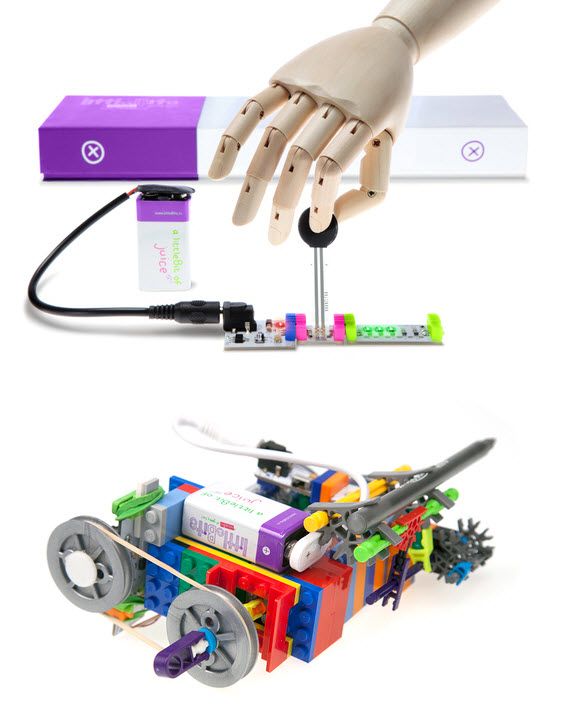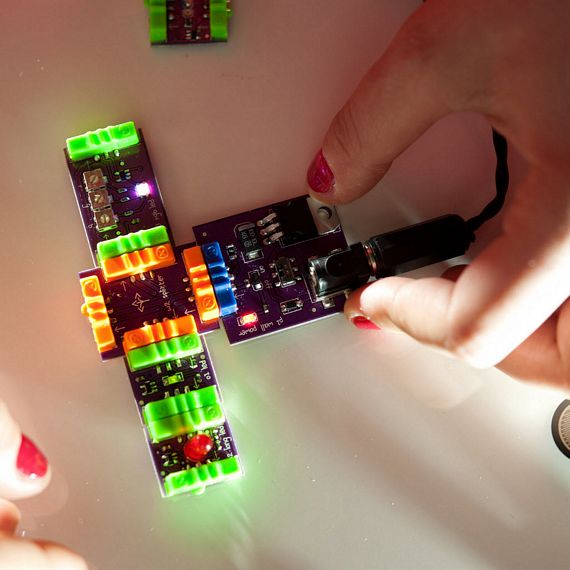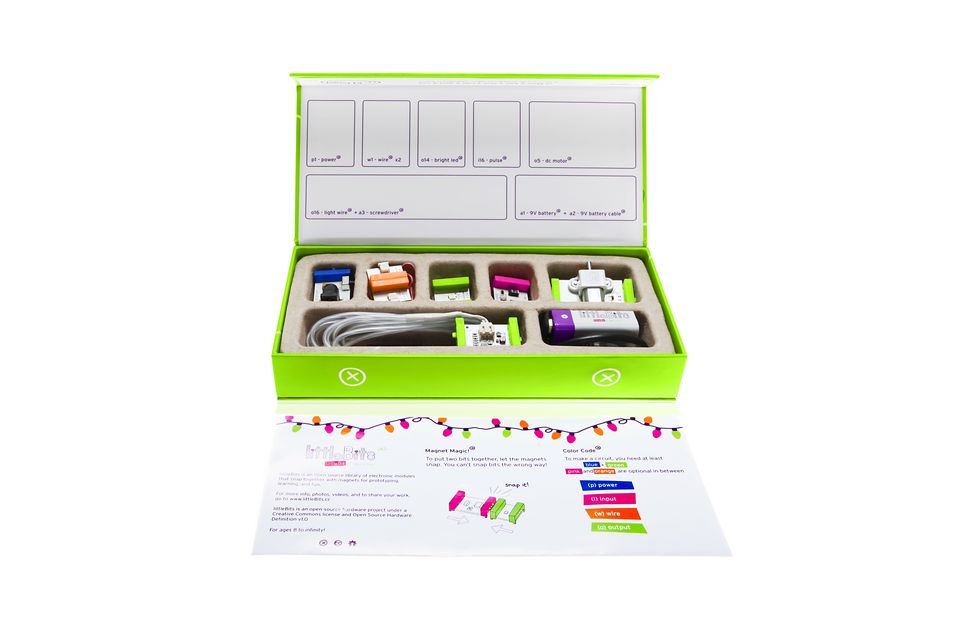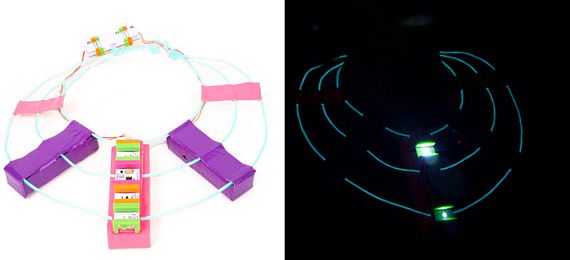I know plenty of parents who’d like to get their little kids interested in electronics — those engineers make serious money these days, after all. Between the soldering, wiring and all the coding involved, though, even adults are probably going to end up more frustrated than entertained fiddling with a bunch of random electronic components. New York-based littleBits is looking to change that by letting kids create working electronics without all the tedious work.
Originally founded in 2011, the company intends to “turn everyone into an inventor by making electronics accessible as a material.” Basically, they let you build complex electronic structures without having to worry about solders, wires and programming — just come up with an idea and bring it to life, the same way LEGO lets non-engineers construct relatively complex structures.
This is done by using individual electronic modules called Bits, each of which come fitted with a single function like a buzzer, an RGB LED light, or a motion trigger. Each module can them be connected to another module using built-in magnets. Once two modules are attached, they can then interact in a similar way as modules wired to each other, all without requiring you to fiddle with a single copper strand. The power, of course, comes in daisy-chaining multiple modules for a variety of functions limited only by the kind of projects you can dream up.
There are four categories of Bits in littleBits’ ecosystem: Power, Input, Output and Wire. Power Bits supply power to the other modules, either from a wall outlet, a battery source or a computer via USB. Input Bits are used to interpret data in the environment and includes modules such as triggers, switches and sensors. Output Bits, on the other hand, effect change of some sort, such as a LED bulb (it lights up), a buzzer (it creates sound), or motor (it vibrates). Wire Bits are go-betweens, routing the power and communication between two or more bits. While some projects won’t require them, if you want to put some distance between your Input Bit and Output Bit, then inserting one or more Wire Bits should do the trick. They also allow for more complex projects, adding signal inversion and logic wiring to the equation.
We’ve previously featured littleBits’ 10-module starter kit when they first started selling them and found plenty to rave about. That library of modules has now grown to 35, allowing young and old tinkerers alike to create even more elaborate working prototypes for their electronic inventions. The original set consisted of some basic modules (power, bargraph, button, dimmer, LED, light pulse, RGB LED, wire Bit, pressure sensor and vibration motor), which has now been reinforced with more complex modules like a fan, light and motion triggers, a slide dimmer, a roller switch, a DC motor, a bend sensor and more.
Every set you order comes with an instruction sheet that lists several project plans, so you can get your feet wet building with the platform immediately. The littleBits website also offers a ton of plans both created by the team and submitted by their community, so you can get a lot of ideas for your own projects from there. Granted, there’s probably no way an aspiring supervillain can build a Doomsday Device with this thing, but we’re pretty certain this can keep your kids busy trying to do just that for days. And by “your kids,” we mean you. Fun fact: they used littleBits modules along with K’NEX construction blocks to build the toy tattoo machine in the new Taylor Swift/Ed Sheeran music video.
The littleBits Starter Kit is available for $89, with the Extended Kit on retail for $149. They also sell a number of other sets and modules individually from the website, so check them out if you’re interested.



